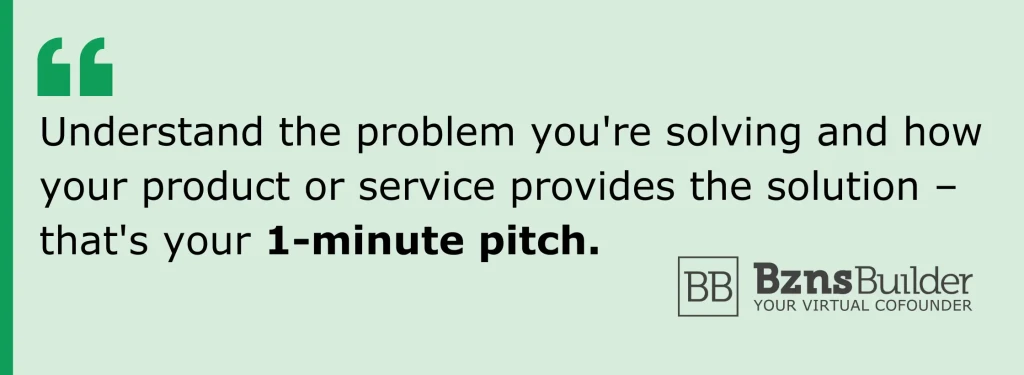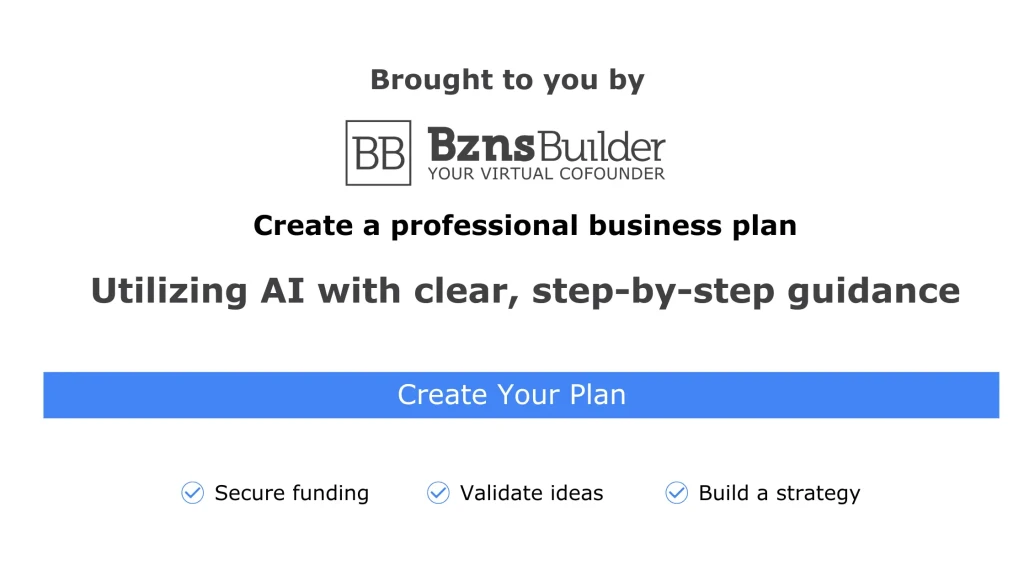What to Say in Your 1, 5, 10, or 20-Minute Elevator Pitch

Before diving into the specifics of crafting an effective elevator pitch, it’s important to recognize how the time allocated can shape your approach. Whether you’re delivering a succinct one-minute pitch or presenting a detailed 20-minute proposal, tailoring your elevator pitch to fit the timeframe is critical.
For example, a five-minute presentation followed by a Q&A session will demand a different strategy than a quick one-minute overview. But what exactly should you include in each scenario? How do you make the most of every second or expand effectively with more time? Let’s break it down.
The One-Minute Pitch
This ultra-short elevator pitch requires you to be clear and concise. While it can feel intense, there is an upside for those nervous about public speaking: it’s over quickly. The challenge lies in using this limited time effectively.
Think of the one-minute pitch as the essence of your business: What problem are you solving? Confidence and clarity are critical, as is delivering the most straightforward explanation of your product or service.
For example, in Amman, Jordan, a fintech entrepreneur used a one-minute pitch to introduce a mobile app that streamlines digital payments for small businesses, addressing inefficiencies in cash-heavy economies. Their pitch gained attention from local angel investors.
The Five-Minute Pitch
A five-minute pitch allows you to expand beyond your core message. You’ll still need to cover the problem your business solves and your solution, but this time, you can also highlight your competitive advantage and demonstrate why your team is the best fit for the job.
In Riyadh, Saudi Arabia, a renewable energy startup founder used a five-minute pitch to detail their innovative solar panel technology, including data on efficiency improvements and cost reductions. This pitch resonated with investors focused on sustainable energy solutions in the region.
The 10-Minute Pitch
In Lagos, Nigeria, a health-tech startup founder successfully raised $1.2 million in seed funding by leveraging a well-structured 10-minute pitch. They outlined a clear market need, demonstrated the scalability of their solution, and provided data-driven insights to back their projections. This time frame allows for a more detailed presentation of your business model, financial projections, and market strategy, ensuring a well-rounded pitch for investors.
In Casablanca, Morocco, an agritech startup used their 10-minute pitch to showcase a platform that connects farmers to buyers, optimizing supply chains and reducing waste. By presenting market research and early adoption success stories, they secured funding from regional development funds.
The 20+ Minute Pitch
If you have the opportunity to pitch for 20 minutes, it’s likely part of a larger session that includes time for Q&A, often lasting 40 minutes to an hour. To structure your pitch effectively, consider Guy Kawasaki’s 10/20/30 rule:
-
Use no more than 10 slides in your pitch deck.
-
Deliver your presentation in 20 minutes.
-
Use a font size no smaller than 30 points to keep your slides clear and readable.
A tech founder in Nairobi, Kenya, who raised $2 million in venture capital funding, recommends the following structure for a longer pitch:
-
Tell a story
-
Explain your solution
-
Describe your successes
-
Define your target market
-
Explain your plan for customer acquisition
-
Outline your competition
-
Describe your business model
-
Provide your financial projections
-
Introduce your team
-
Clarify your funding needs
-
State your exit strategy
If you start from the heart of your pitch—the one-minute version—each longer iteration allows you to provide more detail, expanding from that point.
A 20-minute pitch gives you ample time not only to cover the high points outlined in the 10-minute pitch but also to expand further. You could include a brief product demo showcasing your technology or delve deeper into your efficient business model. This added time enables you to provide compelling details that may otherwise be omitted in shorter formats.
Advice from the Trenches: Pitch to Win
Entrepreneurs across the EMEA region who have successfully pitched their businesses and secured funding offer valuable advice for crafting a winning pitch. Here are their top insights:
Assemble a Solid Team
Having a strong team is crucial in delivering an effective elevator pitch. Fatima Al-Rahmani, founder of a MedTech startup in Dubai, emphasizes the importance of showcasing your team during your pitch. Address questions like, “Why are you uniquely capable of doing this? Do you have the necessary experience?” Clearly explain why your team is the best choice to execute your vision.
Have a Plan and Structure
Omar Hassan, founder of a logistics platform in Cairo, credits his success to developing a detailed business plan before pitching. While not every pitch requires submitting a business plan, having one can make crafting your pitch and responding to investor inquiries much easier.
Bring a Backup
Hassan Ahmed, founder of a SaaS company in Nairobi, advises always having a hard copy of your pitch deck on hand. Technical difficulties can arise; being prepared ensures you can continue without disruption. “Printing a copy of your slides saved me during a power outage,” he recalls.
Practice
Rehearsing your pitch is essential, especially if you’re prone to nervousness. Practice helps you become comfortable with the material, allowing you to present cohesively and confidently. Avoid memorizing your pitch verbatim; instead, aim for familiarity with the key points. For additional help, consider joining organizations like Toastmasters or exploring pitching guides.
Amal Youssef, founder of an EdTech startup in Tunisia, stresses, “The more you practice, the more natural your delivery becomes. Investors can sense confidence.”
Make Them Say, “Tell Me More.”
Ziad Al-Mansour, founder of a food delivery app in Jeddah, highlights the importance of capturing investor interest. This can be achieved by showcasing traction or entertaining your audience with insights, humor, or controversy. “Highlighting our user growth metrics made investors eager to learn more,” he notes.
Tell Your Story
Every startup has a unique story, and crafting an engaging elevator pitch allows you to bring that story to life. Layla Benali, founder of an AI-driven recruitment platform in Rabat, advises using your pitch to tell a compelling narrative. Include characters (your customers), a problem, a pathway (solution exploration), and your product as the solution. Incorporating humor and statistics can make your pitch memorable and engaging.









